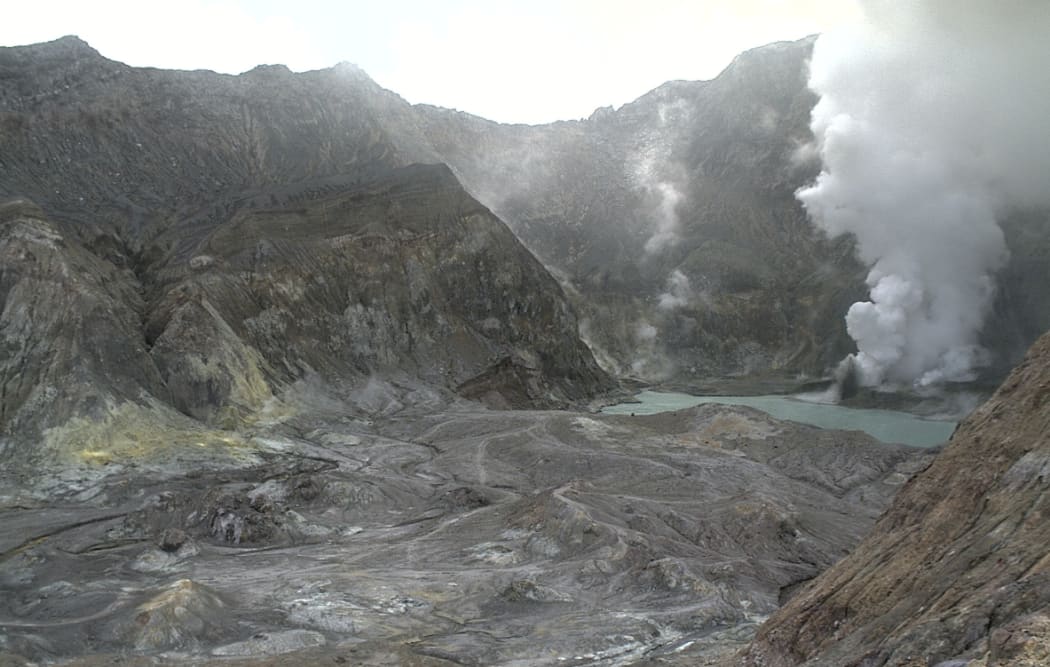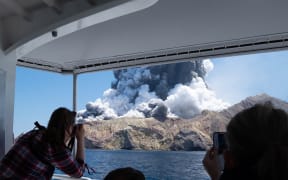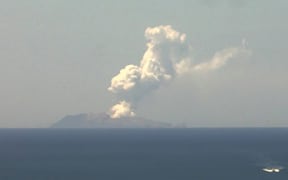By Shane Cronin for The Conversation*
Volcanologists at GeoNet, which operates a geological hazard monitoring system, described the Whakaari/White Island eruption as impulsive and short-lived, with an ash plume that rose to more than 3km above the vent.
White Island is one of several volcanoes in New Zealand that can produce sudden explosive eruptions at any time. In this case, magma is shallow, and the heat and gases affect surface and ground water to form vigorous hydrothermal systems.
In these, water is trapped in pores of rocks in a super-heated state. Any external process, such as an earthquake, gas input from below, or even a change in the lake water level can tip this delicate balance and release the pressure on the hot and trapped water.
The resulting steam-driven eruption, also called a hydrothermal or phreatic eruption, can happen suddenly and with little to no warning. The expansion of water into steam is supersonic in speed and the liquid can expand to 1700 times its original volume. This produces catastrophic impacts.
The expansion energy is enough to shatter solid rock, excavate craters and eject rock fragments and ash out to hundreds of metres away from the vent. We know of sites in New Zealand where material has been blasted out over 3km from the vent by such eruptions.
Read more on the White Island eruption:
- Follow RNZ's live blog for the latest
- PM to victims' families: 'We share in your unfathomable grief'
- White Island eruption - what you need to know
Potential for further eruptions
The hazards expected from steam-driven eruptions are violent ejections of hot blocks and ash, and the formation of "hurricane-like" currents of wet ash and coarse particles that radiate from the explosion vent. These can be deadly in terms of impact trauma, burns and respiratory injuries.

Whakaari / White Island seen in a GeoNet volcano camera on 1 December, prior to the eruption on 9 December. Photo: Facebook / GeoNet
The eruptions are short-lived, but once one happens, there is a high chance for further, generally smaller ones as the system re-equilibrates. White Island is an acute location for such activity, but it is not the only location in New Zealand where this can happen.
Mount Ruapehu (crater lake), Mount Tongariro (Te Maari and Ketetahi) and geothermal areas of the central North Island all have the potential to cause such events. We know there have been more than 60 hydrothermal eruptions in the last 100 years in New Zealand. Some of these have caused loss of life.
No warning
Monitoring and warning for hydrothermal eruptions is a huge challenge. We don't normally see these eruptions coming, no matter how much we would like to. Many systems are already "primed" for such events, but the triggers are poorly understood.
The warning periods, once an event gets underway, are likely in the order of seconds to minutes. Our only hope for anticipating these events is to track potential vapour and liquid pressure in hydrothermal systems and to learn from their long-term behaviour when they are at a super-critical state.
Unfortunately there are no simple rules that can be followed and each hydrothermal system is different.
In this age of technology and instrumental monitoring, it seems irrational that there should be little or no warning for such eruptions. The eruption is not caused by magma, but by steam, and this is much harder to track in our current monitoring systems.
We have seen several other fatal hydrothermal catastrophies unfold in other parts of the world, such as the 2014 eruption of Mount Ontake in Japan. New Zealand has been luckier than many other parts of the world, until now.
*Shane Cronin is a professor of Earth Sciences at University of Auckland with research interests in volcano-tectonic interactions and instability, understanding Auckland's volcanic past and future risk, and large-scale explosive volcanism at andesite volcanoes.





